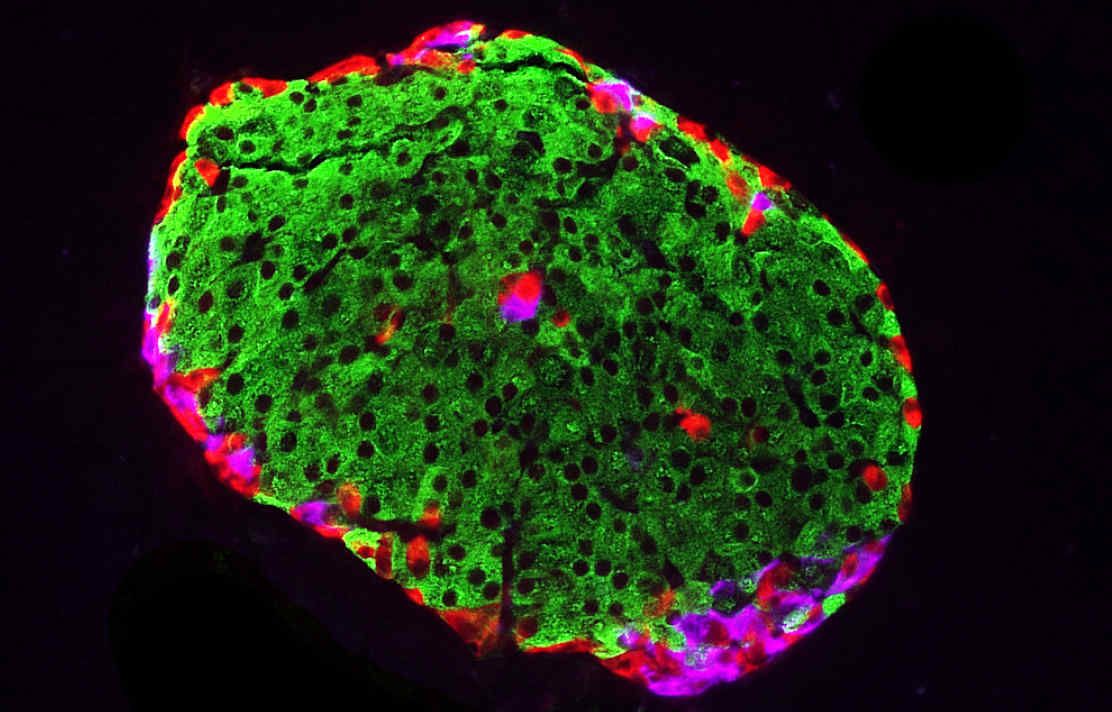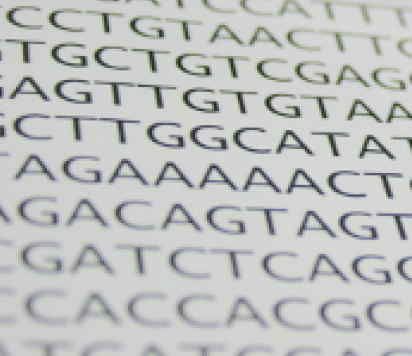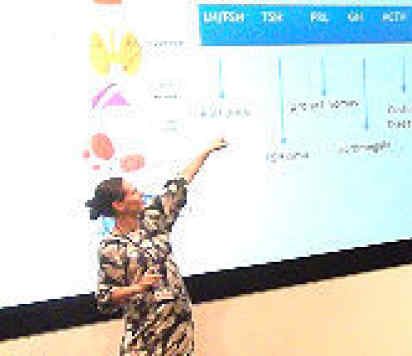Results
- Showing results for:
- Reset all filters
Search results
-
Journal articleZhao L, Oliver E, Maratou K, et al., 2015,
The zinc transporter, ZIP12, regulates the pulmonary vascular response to chronic hypoxia
, Nature, Vol: 524, Pages: 356-360, ISSN: 0028-0836The typical response of the adult mammalian pulmonary circulation to a low oxygen environment is vasoconstriction and structural remodelling of pulmonary arterioles, leading to chronic elevation of pulmonary artery pressure (pulmonary hypertension) and right ventricular hypertrophy. Some mammals, however, exhibit genetic resistance to hypoxia-induced pulmonary hypertension1, 2, 3. We used a congenic breeding program and comparative genomics to exploit this variation in the rat and identified the gene Slc39a12 as a major regulator of hypoxia-induced pulmonary vascular remodelling. Slc39a12 encodes the zinc transporter ZIP12. Here we report that ZIP12 expression is increased in many cell types, including endothelial, smooth muscle and interstitial cells, in the remodelled pulmonary arterioles of rats, cows and humans susceptible to hypoxia-induced pulmonary hypertension. We show that ZIP12 expression in pulmonary vascular smooth muscle cells is hypoxia dependent and that targeted inhibition of ZIP12 inhibits the rise in intracellular labile zinc in hypoxia-exposed pulmonary vascular smooth muscle cells and their proliferation in culture. We demonstrate that genetic disruption of ZIP12 expression attenuates the development of pulmonary hypertension in rats housed in a hypoxic atmosphere. This new and unexpected insight into the fundamental role of a zinc transporter in mammalian pulmonary vascular homeostasis suggests a new drug target for the pharmacological management of pulmonary hypertension.
-
Journal articleSpaeth JM, Hunter CS, Bonatakis L, et al., 2015,
The FOXP1, FOXP2 and FOXP4 transcription factors are required for islet alpha cell proliferation and function in mice
, Diabetologia, Vol: 58, Pages: 1836-1844, ISSN: 1432-0428Aims/hypothesis Several forkhead box (FOX) transcriptionfactor family members have important roles in controllingpancreatic cell fates and maintaining beta cell mass and function,including FOXA1, FOXA2 and FOXM1. In this studywe have examined the importance of FOXP1, FOXP2 andFOXP4 of the FOXP subfamily in islet cell developmentand function.Methods Mice harbouring floxed alleles for Foxp1, Foxp2and Foxp4 were crossed with pan-endocrine Pax6-Cre transgenicmice to generate single and compound Foxp mutantmice. Mice were monitored for changes in glucose toleranceby IPGTT, serum insulin and glucagon levels by radioimmunoassay,and endocrine cell development and proliferation byimmunohistochemistry. Gene expression and glucosestimulatedhormone secretion experiments were performedwith isolated islets.Results Only the triple-compound Foxp1/2/4 conditionalknockout (cKO) mutant had an overt islet phenotype, manifestedphysiologically by hypoglycaemia andhypoglucagonaemia. This resulted from the reduction inglucagon-secreting alpha cell mass and function. The proliferationof alpha cells was profoundly reduced in Foxp1/2/4cKO islets through the effects on mediators of replication (i.e.decreased Ccna2, Ccnb1 and Ccnd2 activators, and increasedCdkn1a inhibitor). Adult islet Foxp1/2/4 cKO beta cells secreteinsulin normally while the remaining alpha cells haveimpaired glucagon secretion.Conclusions/interpretation Collectively, these findings revealan important role for the FOXP1, 2, and 4 proteins ingoverning postnatal alpha cell expansion and function.
-
Journal articleCebola I, Rodríguez-Seguí SA, Cho CH-H, et al., 2015,
TEAD and YAP regulate the enhancer network of human embryonic pancreatic progenitors
, Nature Cell Biology, Vol: 17, Pages: 615-626, ISSN: 1465-7392 -
Journal articleFerrer J, Jörs S, Jeliazkova P, et al., 2015,
Lineage fate of ductular reactions in liver injury and carcinogenesis.
, Journal of Clinical Investigation, Vol: 125, Pages: 2445-2457, ISSN: 1558-8238Ductular reactions (DRs) are observed in virtually all forms of human liver disease; however, the histogenesis and function of DRs in liver injury are not entirely understood. It is widely believed that DRs contain bipotential liver progenitor cells (LPCs) that serve as an emergency cell pool to regenerate both cholangiocytes and hepatocytes and may eventually give rise to hepatocellular carcinoma (HCC). Here, we used a murine model that allows highly efficient and specific lineage labeling of the biliary compartment to analyze the histogenesis of DRs and their potential contribution to liver regeneration and carcinogenesis. In multiple experimental and genetic liver injury models, biliary cells were the predominant precursors of DRs but lacked substantial capacity to produce new hepatocytes, even when liver injuries were prolonged up to 12 months. Genetic modulation of NOTCH and/or WNT/β-catenin signaling within lineage-tagged DRs impaired DR expansion but failed to redirect DRs from biliary differentiation toward the hepatocyte lineage. Further, lineage-labeled DRs did not produce tumors in genetic and chemical HCC mouse models. In summary, we found no evidence in our system to support mouse biliary-derived DRs as an LPC pool to replenish hepatocytes in a quantitatively relevant way in injury or evidence that DRs give rise to HCCs.
-
Journal articleMarquard J, Otter S, Welters A, et al., 2015,
Characterization of pancreatic NMDA receptors as possible drug targets for diabetes treatment
, Nature Medicine, Vol: 21, Pages: 363-372, ISSN: 1078-8956In the nervous system, NMDA receptors (NMDARs) participate in neurotransmission and modulate the viability of neurons. In contrast, little is known about the role of NMDARs in pancreatic islets and the insulin-secreting beta cells whose functional impairment contributes to diabetes mellitus. Here we found that inhibition of NMDARs in mouse and human islets enhanced their glucose-stimulated insulin secretion (GSIS) and survival of islet cells. Further, NMDAR inhibition prolonged the amount of time that glucose-stimulated beta cells spent in a depolarized state with high cytosolic Ca2+ concentrations. We also noticed that, in vivo, the NMDAR antagonist dextromethorphan (DXM) enhanced glucose tolerance in mice, and that in vitro dextrorphan, the main metabolite of DXM, amplified the stimulatory effect of exendin-4 on GSIS. In a mouse model of type 2 diabetes mellitus (T2DM), long-term treatment with DXM improved islet insulin content, islet cell mass and blood glucose control. Further, in a small clinical trial we found that individuals with T2DM treated with DXM showed enhanced serum insulin concentrations and glucose tolerance. Our data highlight the possibility that antagonists of NMDARs may provide a useful adjunct treatment for diabetes.
-
Journal articleKim YH, Larsen HL, Rue P, et al., 2015,
Cell Cycle-Dependent Differentiation Dynamics Balances Growth and Endocrine Differentiation in the Pancreas
, PLOS Biology, Vol: 13, ISSN: 1545-7885Organogenesis relies on the spatiotemporal balancing of differentiation and proliferationdriven by an expanding pool of progenitor cells. In the mouse pancreas, lineage tracing atthe population level has shown that the expanding pancreas progenitors can initially giverise to all endocrine, ductal, and acinar cells but become bipotent by embryonic day 13.5,giving rise to endocrine cells and ductal cells. However, the dynamics of individual progenitorsbalancing self-renewal and lineage-specific differentiation has never been described.Using three-dimensional live imaging and in vivo clonal analysis, we reveal the contributionof individual cells to the global behaviour and demonstrate three modes of progenitor divisions:symmetric renewing, symmetric endocrinogenic, and asymmetric generating a progenitorand an endocrine progenitor. Quantitative analysis shows that the endocrinedifferentiation process is consistent with a simple model of cell cycle–dependent stochasticpriming of progenitors to endocrine fate. The findings provide insights to define control parametersto optimize the generation of β-cells in vitro.
-
Journal articleRovira M, Ferrer J, 2015,
Weaning gives beta cells license to regenerate
, Developmental Cell, Vol: 32, Pages: 531-532, ISSN: 1534-5807 -
Journal articleMitchell RK, Mondragon A, Chen L, et al., 2015,
Selective disruption of <i>Tcf7l2</i> in the pancreatic β cell impairs secretory function and lowers β cell mass
, HUMAN MOLECULAR GENETICS, Vol: 24, Pages: 1390-1399, ISSN: 0964-6906- Author Web Link
- Open Access Link
- Cite
- Citations: 75
-
Journal articleThorens B, Tarussio D, Maestro MA, et al., 2015,
<i>Ins1</i> <SUP>Cre</SUP> knock-in mice for beta cell-specific gene recombination
, DIABETOLOGIA, Vol: 58, Pages: 558-565, ISSN: 0012-186X- Author Web Link
- Open Access Link
- Cite
- Citations: 123
-
Journal articleKone M, Sun G, Ibberson M, et al., 2014,
LKB1 and AMPK differentially regulate pancreatic beta-cell identity
, Faseb Journal, Vol: 28, Pages: 4972-4985, ISSN: 1530-6860Fully differentiated pancreatic b cellsare essential for normal glucose homeostasis in mammals.Dedifferentiation of these cells has been suggestedto occur in type 2 diabetes, impairing insulinproduction. Since chronic fuel excess (“glucotoxicity”)is implicated in this process, we sought here to identifythe potential roles in b-cell identity of the tumor suppressorliver kinase B1 (LKB1/STK11) and the downstreamfuel-sensitive kinase, AMP-activated proteinkinase (AMPK). Highly b-cell-restricted deletion ofeach kinase in mice, using an Ins1-controlled Cre, wastherefore followed by physiological, morphometric,and massive parallel sequencing analysis. Loss of LKB1strikingly (2.0–12-fold, E<0.01) increased the expressionof subsets of hepatic (Alb, Iyd, Elovl2) and neuronal(Nptx2, Dlgap2, Cartpt, Pdyn) genes, enhancing glutamatesignaling. These changes were partially recapitulatedby the loss of AMPK, which also up-regulated b-cell“disallowed” genes (Slc16a1, Ldha, Mgst1, Pdgfra) 1.8- to3.4-fold (E<0.01). Correspondingly, targeted promoterswere enriched for neuronal (Zfp206; P51.3310233)and hypoxia-regulated (HIF1; P52.5310216) transcriptionfactors. In summary, LKB1 and AMPK, through onlypartly overlapping mechanisms, maintain b-cell identityby suppressing alternate pathways leading to neuronal,hepatic, and other characteristics. Selective targetingof these enzymes may provide a new approach tomaintaining b-cell function in some forms of diabetes.—Kone,M., Pullen, T. J., Sun, G., Ibberson, M.,Martinez-Sanchez, A., Sayers, S., Nguyen-Tu, M.-S.,Kantor, C., Swisa, A., Dor, Y., Gorman, T., Ferrer, J.,Thorens, B., Reimann, F., Gribble, F., McGinty, J. A.,Chen, L., French, P. M., Birzele, F., Hildebrandt, T.,Uphues, I., Rutter, G. A. LKB1 and AMPK differentiallyregulate pancreatic b-cell identity.
This data is extracted from the Web of Science and reproduced under a licence from Thomson Reuters. You may not copy or re-distribute this data in whole or in part without the written consent of the Science business of Thomson Reuters.

Links
General enquiries
Beta Cell Genome Regulation Lab
ICTEM Building, 5th floor
Hammersmith Campus
Du Cane Road
London
W12 0NN
Enquiries
d.cieslak-jones@imperial.ac.uk
+44 (0)20 7594 2739


